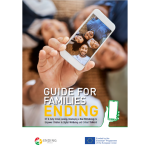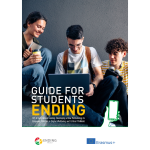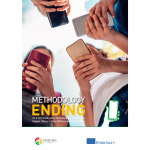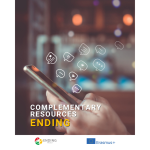Synthesis of the intervention of Andrés González Bellido, Coordinator of the TEI Program, Peer Tutoring, during the ENDING Project Day “Digital health and safety against school dropout”.
The TEI program (the acronym TEI in spanish corresponds to “Tutorías Entre Iguales”, translated into English as “Peer Tutoring”) is a program to improve coexistence, prevent violence and bullying, also addressing mental health. The programme has been implemented in approximately 1,800 schools and has directly trained some 80,000 teachers. Every year, approximately 300,000 new students start the programme, and about 3 million students have passed through it. The program is developed in different European and South American countries, and there are 14 work and coordination teams in all the autonomous communities in Spain. There is a research and development team of approximately 100 people, and there are five university research groups.
It is based on emotional tutoring between students, with tutors who are two years older. It works mainly objectives, capacities and competences. Specifically the five Cs, working the Capacities, the Competences in the Coexistence with the Heart from the emotion and that this leads us to the Commitment, to the Commitment as an educational Community.
The intervention on prevention of violence and bullying, including cyberbullying, should be an integral project that involves the entire educational community: students, teachers, families and environment. The project works to generate healthy behaviors from an early age to reduce the incidence of violence and bullying, higher in primary than in secondary school. Emotional education is one of the theoretical bases, working with emotions to generate the need to learn.
The emotional mentoring program is implemented at different educational levels, from primary to secondary. In this program, older students become emotional guardians for younger students, and are held accountable for helping resolve situations of violence or bullying, including cyberbullying.
The idea behind this program is that having a tutor two years older than the student who has generated disruptive behavior creates a balance and reduces the difference in power and strength between the aggressor and the victim. The emotional guardian is responsible for talking to the person who has generated disruptive behavior and teaching them about the rights of others and the importance of treating everyone fairly and respectfully.
It is important to mention that to be part of the research team in this program, it is necessary to have been in the classrooms and to know well the situations that can arise in educational spaces. In 50% of cases, when the emotional guardian is not able to solve the situation, the problem is discussed with the aggressor’s classmate, who also acts as an emotional guardian.
The TEI focuses on emotional and inclusion issues, and is based on the emotional design of learning. Realistic videos of one to three minutes are used to emotionally connect with students and promote reflection and engagement. In addition, the program also works with families to prevent violence and bullying and provide information on how to intervene.
From a social perspective, violence and bullying prevention programs have been shown to significantly improve communication levels and reduce bullying, both verbal and physical. Increased levels of mental health and well-being have also been observed, including self-esteem and a reduction in the perception of anxiety and depression.
Any violence and bullying prevention program must meet certain requirements to be effective. First, it must be preventive and work before violent behaviour occurs. Second, it must be institutional and involve the entire educational community. Third, it must be curricular and work on the development of skills and competences. Fourth, it must be inclusive and involve all students.
However, it has been observed that mediation is not an effective system for working on the prevention of violence and bullying. Mediation between aggressor and victim can generate emotional dependence and submission, which is not an adequate strategy to work violence and bullying. There is no known program that uses mediation as a system to work these problems.
In conclusion, the words of the rapporteur are significant: “The main protagonists of the programme are the tutors. If you want something to change, ask yourself what can I do, and start walking. That the path is coexistence, that the key is example. That the protagonist is you. Because violence and bullying leave scars. Act. We must stop preaching. To act. You are the protagonist. You as father or you as mother”.








